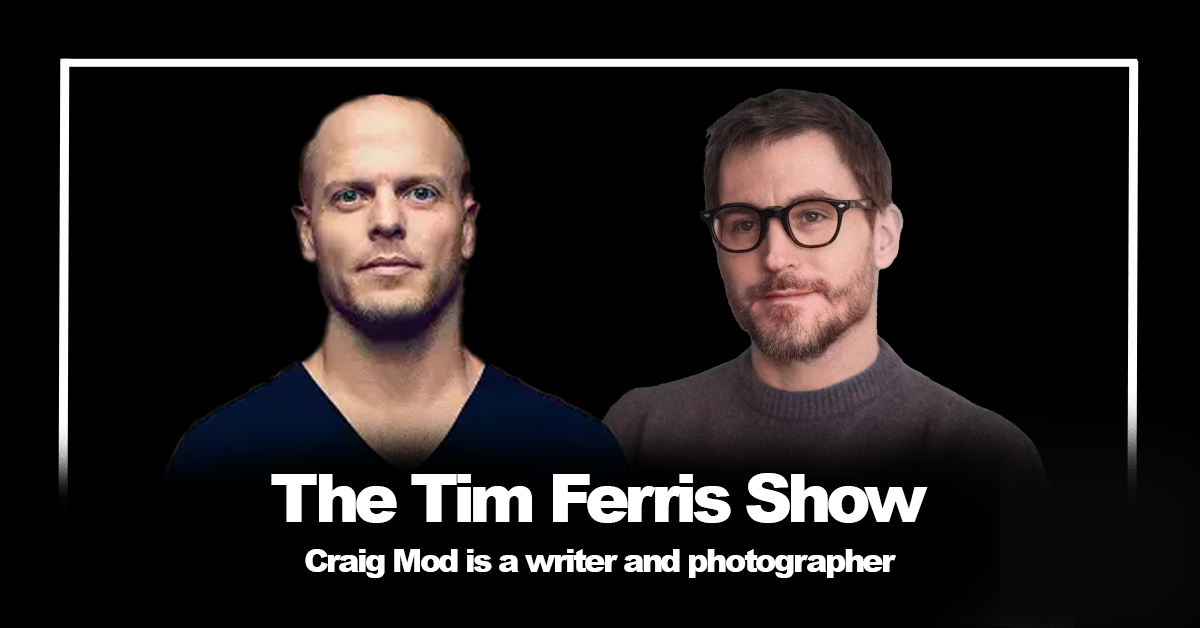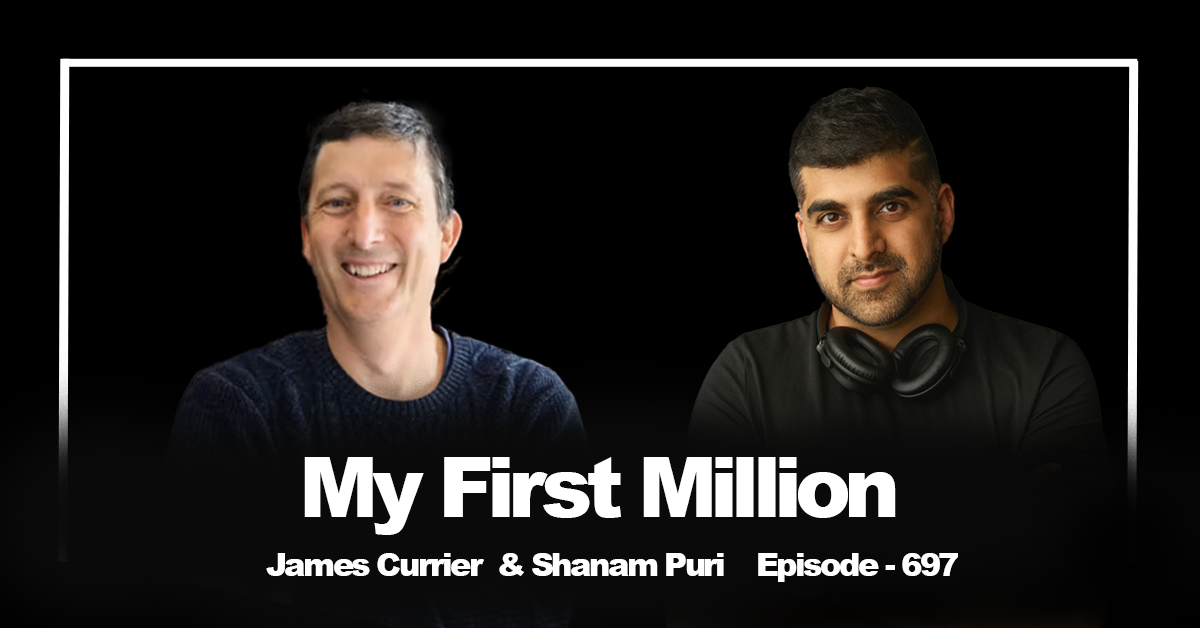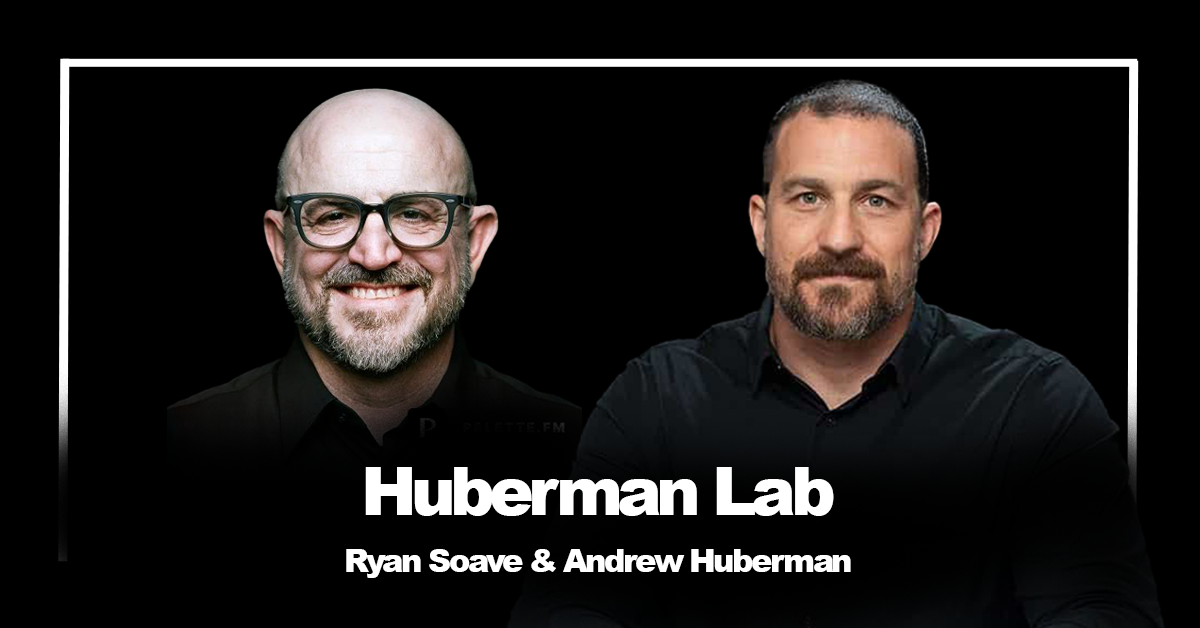Welcome back for Part 2 of the deep dive with Craig Mod. If you missed Part 1 (or need a refresher), Craig is a writer, photographer, publisher, and walker known for his explorations of Japan, technology, and creativity.
In this second conversation, Tim and Craig delve even deeper into the practicalities and philosophies behind Craig’s extensive walks across Japan (like the Kumano Kodo and Nakasendo), his unique creative process, the story behind launching his successful membership program, and, most profoundly, the recent and unexpected journey of connecting with his birth mother and biological family after decades.
This episode is packed with insights on routine, constraints, creativity, the surprising nature of scale, and the deeply personal journey of understanding identity and belonging.
Here are the detailed key insights and takeaways:
1. The Walking Practice: Structure, Constraints & Creativity
- Huge Walks: Craig undertakes multi-week (sometimes 6+ weeks) solo walks covering hundreds of kilometers (e.g., 600km Nakasendo), often walking 30-50km per day.
- Rules for Radical Presence: To cultivate deep boredom and focus, Craig imposes strict rules on his walks:
- No reading the news.
- No social media.
- No “teleporting” (immediately reaching for the phone/distraction at the slightest friction).
- Radical presence is the goal.
- Arbitrary Constraints Spark Creativity: Sets daily arbitrary tasks, like taking a portrait before 10 am. This structures the day and forces interaction, leading to unexpected encounters and content.
- Daily Routine: Walk 8 hours, arrive at inn/hotel around 5 pm, do laundry, then 4-5 hours of intense creative work (writing 2-4k words, editing photos) every single night.
- Pre-Scheduling is Freedom: Books all lodging and logistics weeks/months in advance. This removes cognitive burden during the walk, freeing him to be fully present and observant. Counters the romantic notion of spontaneous discovery, arguing the structure enables deeper engagement.
2. Creative Process: SMS Books, Essays & Finding Form
- Giving Shape to the Immaterial: Craig felt his walks were profound but ephemeral. This drove him to find ways to give them tangible form.
- SMS Experiment (Nakasendo 2019): Built a tool to publish a photo and short text via SMS nightly to subscribers. Responses were collected but unseen by Craig until after the walk, creating a delayed, analog feedback loop. The thousands of responses were compiled into a print-on-demand book waiting for him upon his return. This highlighted the desire for slower, more intimate connection.
- “Kissa by Kissa”: His book born from walking the Nakasendo and visiting countless kissaten (old-style Japanese cafes). Obsessed with pizza toast (a kissaten staple), this became a lens to explore disappearing post-war Japanese culture.
- Craigstarter: Cloned Kickstarter on Shopify to have more control, offer member discounts, and own the software stack for his book launches. Offering a significant member discount (
40−40−50 off a $100 book) drove a 30% conversion rate from buyer to member, unlocking a powerful realization about his audience and sustainable model. - Scale & Uncompromising Vision: Finding his “right scale” (thousands of dedicated readers vs. millions of fleeting impressions) allows him total creative freedom and sustainability. He contrasts this with the “false narrative” of needing mass scale (like Facebook) to have impact.
3. Membership Community: Rules for Sustainability & Focus
- Permission & Funding: Started his “Special Projects” membership in 2019 after realizing he had an audience willing to fund his exploratory walks and writing.
- Clear Creative Goals: (Rule #1 & #2) His goals (make books, educate) are paramount. Activities must support these goals.
- Program Exists for Goals, Not Members: (Rule #4) A potentially “cold” but crucial rule – the focus remains on the creative output, preventing the community management itself from becoming the primary (and draining) task.
- Deadlines are Your Friends: (Rule #8) Obsessive adherence to deadlines is non-negotiable for getting work done.
- Know Your Scale: (Rule #11) Understand the scale at which you can operate happily and sustainably. Don’t chase mega-scale if it compromises the work or your well-being.
4. Connecting with Biological Family: Identity, Reconciliation & Timing
- Adoptee Background: Craig shared his experience being adopted, the feeling of disconnection, and the constructed narrative around his birth father’s death (which turned out to be a fabrication by his young birth mother).
- The Ancestry Match: After years of suppressing curiosity (partly not wanting to dishonor his adoptive parents), he joined Ancestry.com and matched with his birth mother a year later.
- Hesitation & Timing: Initially didn’t respond to her cryptic “hi” message for months, feeling overwhelmed and protective of his established life and identity, especially his profound bond with his stepdaughter which had given him a strong sense of self-worth he previously lacked.
- The Letters: Eventually sent an anonymous message outlining his life. His birth mother responded with two deeply emotional 5,000-word letters, revealing the true (less traumatic, more complex) story of his birth and her life.
- Meeting & Reconciliation: They finally met for lunch in Chicago (where she lives). The meeting was surreal, emotional, and ultimately positive, reconfiguring his entire “Genesis story” in real-time. He discovered he has a half-sister (age 28) living in Alaska.
- Slow Unraveling: Describes the process as slowly unwinding “tightly wound Springs of tension,” opening his heart in unexpected ways. The timing felt right because he had reached a place of personal stability and self-acceptance.
5. On Japan:
- Enduring Appeal: Despite frustrations, Japan’s unique blend of ancient traditions (pilgrimages, temples), deep history, safety, walkability, and specific cultural niches (like kissaten) keeps drawing him back.
- Language & Connection: Emphasizes John McBride’s mastery of polite, nuanced Japanese (learned partly through Tea Ceremony) as a key tool for unlocking deep connections with locals, treating farmers with the same reverence as CEOs. Craig contrasts his own more “Yakuza Japanese” learned in clubs and studios.
- Midsize Cities: Champions exploring Japan’s “B-side” cities (like Morioka – his NYT pick, or Yamaguchi/Hagi) often overlooked by tourists but full of cultural heritage, beauty, and unique local experiences. His promotion has demonstrably boosted tourism in these areas.
Final Thought:
This conclusion to the conversation with Craig Mod was a remarkable blend of practical creative strategy, cultural exploration, and deeply personal revelation. His journey underscores the power of constraints in fostering creativity, the importance of finding your own definition of scale and success, and the profound, often unexpected ways our past shapes our present. His story of reconnecting with his birth mother is a moving testament to timing, vulnerability, and the complex tapestry of identity.
Find all things Craig Mod (essays, books, membership) at craigmod.com.
Until next time,
The Podcast Notes Team





